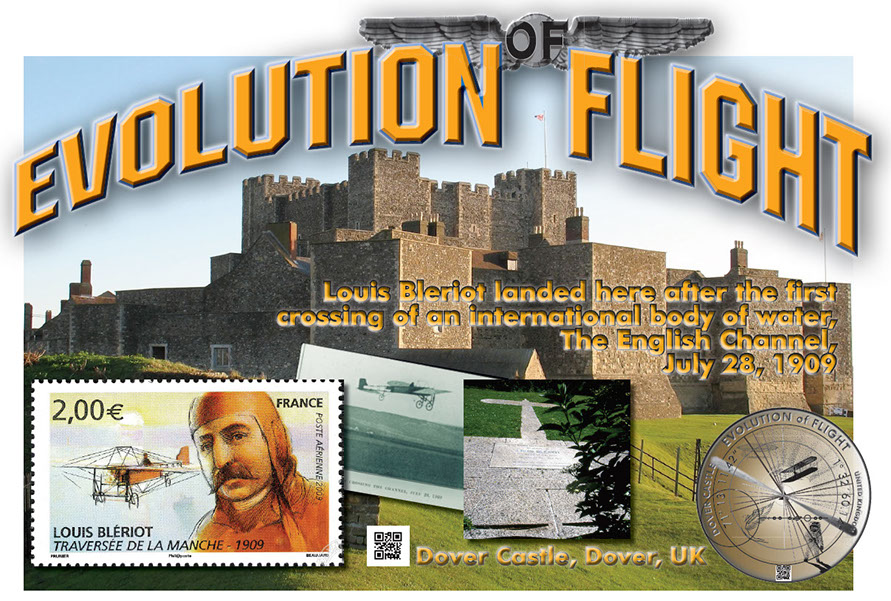

Dover Castle
Here on the coastline of England stands this medieval castle which was built by Henry the Second, nearly a thousand years ago. It is the largest castle in the realm.
The landmark was the site of the first ever crossing of an international body of water, The English Channel, by air in the summer of 1909.
The aerial age was not yet a decade old, and the advancements in aircraft and technology were making longer flights possible and practical. There were large cash prizes offered for anyone who could be . . . “the first”. Many thought the flight and the prize were unreachable.
Louis Bleriot, a French aviator had been designing and building aircraft since 1905 and was present at the first landmark public flight by Wilbur Wright, at Le Mans. His designs became much more streamlined and he employed the Wright’s method of control through wing warping.
In July 1909 there were several competitors gathered near Calais on the French coast, waiting for the weather to clear. The French Navy had stationed a Destroyer halfway across the expanse of water, about 22 miles across.
Bleriot made a short test flight just before dawn. He decided that he would go. Taking off at 4:41am, the rules stated the flight had to be between sunrise and sunset, he headed across the channel.
He was flying with a three-cylinder Azani engine, originally a motorcycle engine, which had an annoying tendency to blow up after about 20 minutes from overheating. The was fog and rain midway across and Bleriot flew through the rain to cool the engine, and kept going.
He had no compass and had lost his bearings and feared the worst, but then the English coastline appeared as a faint gray line and turned toward what he thought was the destination. Soon the sight became defined and he was parallel to the shore. Turning in . . . he spotted the Dover Castle and the landing spot his friend, Charles Fontaine, the correspondent from Le Matin waving a large French flag, the tricolor, as a signal.
Cutting the engine at 20 meters, he made a landing which shattered the under-carriage but was uninjured proving that any landing you can walk away from is a good one.
This is where the first international boundary was crossed by a powered aircraft. England was no longer an island.
Contact: Dan Patterson 937-367-4639 email photopilot6795@earthlink.net